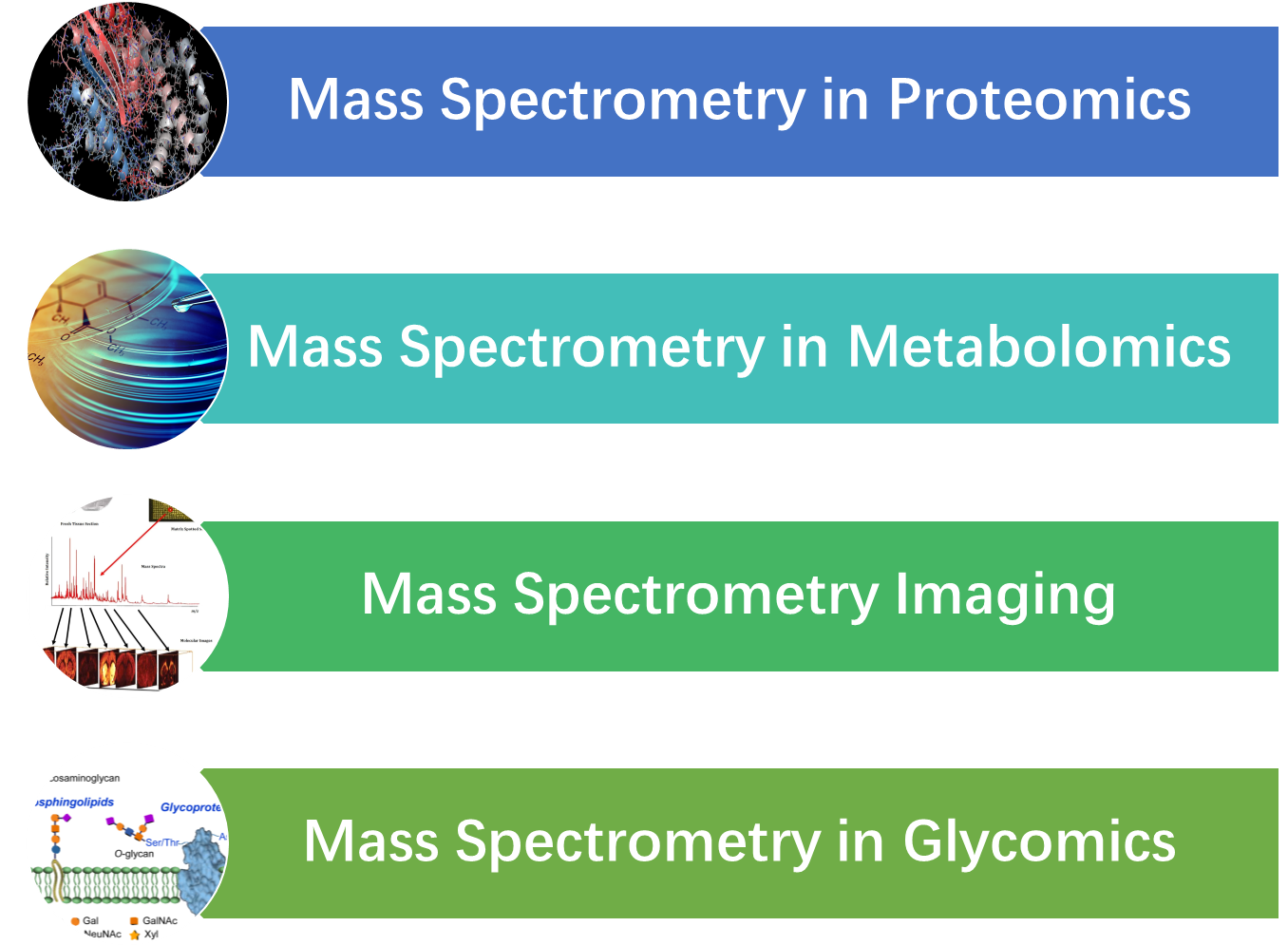Mass spectrometry (MS) can ionize a sample and measure the mass-to-charge (m/z) ratios of the resulting ions. With the combination of the mass spectrometer, computer technology, and the software, the range of applications of MS becomes more and more extensive. The wide variety of sample types that can now be analyzed, and the breadth of information that can be obtained help MS to permeate into a wide range of research areas including chemistry, biochemistry, pharmacy, medicine, and many related fields of science.

Mass Spectrometry in Proteomics
MS has become a powerful tool in proteomics research to precisely determine the molecular mass of peptides and proteins and the sequences. In tandem mass spectrometry, fragmentation of peptides and proteins gives sequence information for protein identification as well as identification and localization of post-translational or other covalent modifications.
Mass spectrometry has become the major method for protein identification. There are two main MS-based protein identification methods, including de novo sequencing and peptide mass fingerprinting (PMF) database searching. Proteins are finally identified from the peaks of the captured mass spectra using computational methods, where each peak theoretically represents a peptide fragment ion.
Proteomics research often requires the level of protein expression. With the emergence and development of mass spectrometry, we can learn more reliable and dynamic means for analyzing differential expression of proteins. Quantitative proteomics can be divided into relative quantification and absolute quantification. Relative quantification aims to study the difference of proteome expression among different situations with stable isotope labeling and label-free quantification as two main methods. Absolute quantification refers to obtaining the specific expression level of the protein. There are some methods commonly used for protein quantification, such as iTRAQ (isobaric tags for relative and absolute quantitation), SILAC (stable isotope labeling with amino acids in cell culture), ICAT (isotope-coded affinity tags), label-free quantification and so on.
Post-translational modifications (PTMs) are chemical alterations to protein structure, which are typically catalyzed by substrate-specific enzymes. There are various types of PTM, including phosphorylation, acetylation, acetylation, glycosylation, and so on. MS is considered a key technology for the protein modifications analysis because it can provide universal information about protein modifications without a priori knowledge and location of the modifying sites. Top-down, middle-down, and bottom-up approaches are the main three strategies for MS-based PTM analysis.
Mass Spectrometry in Metabolomics
Metabolite refers to the small molecules that participate in general metabolic reactions and that are required for the maintenance, growth and normal function of a cell, and the metabolomics is the identification and quantification of all metabolites in a biological system. MS and nuclear magnetic resonance (NMR) are commonly used analytical tools for small-molecule analysis in metabolomics. MS-based metabolomics studies the effect of drugs, toxins, and various diseases on metabolite levels, to trace metabolic pathways and measure fluxes.
Mass spectrometry imaging (MSI) is a technology to visualize the spatial distribution of molecules. Mass spectra can be obtained from micrometer-sized areas on surfaces, translating the lateral distribution of compounds on surfaces (microelectronics, slices of tissue) into images, which in turn can be correlated to optical images. There are some common ionization technologies, including DESI imaging, MALDI imaging and secondary ion mass spectrometry imaging (SIMS imaging).
Mass Spectrometry in Glycomics
Glycosylation is one of the most important PTMs and there are more than 50% of all proteins in mammals can be glycosylated. Glycomics, a subset of glycobiology, aims to identify the structure and function of the glycome. MS-base glycomics is widely used to analyze free oligosaccharides, glycosaminoglycans, as well as the glycan portions of glycoproteins, proteoglycans, and glycolipids. Matrix-assisted laser desorption-ionization (MALDI) and electrospray ionization (ESI) are commonly used for glycoconjugate analysis. MS can be used as a stand-alone technology or coupled to separation methods, like high performance liquid chromatography (HPLC) and capillary electrophoresis (CE).
References:
1. Finehout E J, Lee K H. An introduction to mass spectrometry applications in biological research. Biochemistry and molecular biology education, 2004, 32(2): 93-100.
2. Gowda G A N, Djukovic D. Overview of mass spectrometry-based metabolomics: opportunities and challenges. Mass Spectrometry in Metabolomics. Humana Press, New York, NY, 2014: 3-12.










